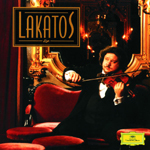This review page is supported in part by the sponsors whose ad banners are displayed below |
 |
 |
|
 |
Taking a first pulse with Dhafer Youssef's Birds Requiem diagnosed serious illness. Yes there was noise-free sound without apparent distortion but the top end was MIA. It sounded worse than turning a treble control fully counter-clockwise. The sound was utterly dull. Muffled behind a woollen scarf. I replaced the SGR with AURALiC Merak monos in case my Nagra Jazz had taken sick with a bad head cold. Instant resurrection. The sound was back to normal. Turning over potential culprits in my mind before crying wolf, I went to sleep on things and eventually awoke with a faintly plausible notion. Clash of the transformers? The Jazz had balancing transformers on its XLR outputs. The Down Under boys had more trafos on their inputs. Did that 'overwind' things? What if I removed Nagra's iron by exiting single-ended instead? |
|
|
 |
My hifi tool box has Nagra XLR-to-RCA adaptors. In with those on the amps, out with the 6m XLR Zu Event leash, in with the equivalent RCA. Presto. Lights back on. Tonal balance was restored, the issue resolved though not its weirdness. If Nagra's costly optional balancing output transformers had tanked or my XLR cable, the Meraks would have sounded equally off. They didn't. It had to be a bad transformer interaction. Too much of a good thing perhaps? Don't know. But the sound hadn't just become normal. It had in some ways become reminiscent of my departed ModWright KWA-100SE: warm, robust and very dynamic.
|
|
|
|
| Control over the deliberately underdamped twin ports of my AudioSolutions Rhapsody 200 wasn't as iron-fisted as the Meraks, Crayon Audio CFA-1.2 or Goldmund/Job 225. This retained more of the typically ported bass textures. Here too it recalled the ModWright. Via the CFA-1.2 and Bakoon AMP-12R the sound was decidedly darker and heavier. Here not there. Materialism versus space. Briefly back on the subject of actual lights, my levels never got high enough to trigger row three of SGR's 4-tier VU meter. I only switched that feature on for documentation. The more dynamically varied your music gets, the more these lights will flicker and jump to distraction. Again, full-on stealth mode cuts even the power lights. This requires mindfulness that your amps are live. Zero visual indication to that effect. To be prudent I left those lights on lest I forget to power down the amps at night. |
|
|
|
 |
Here's a closer final look at 1½ rows before those LEDs got shut down for good. Time to take the steady pulse for real.
|
 |
In association with these very bass-capable speakers, with 5.5 meters of room width and non-lossy brick walls, the SGR monos took to the beaucoup low freqs of Steve Shehan's Hang With You—where The Hadouk Trio's percussionist goes solo to explore the inverted steel drum called hang—like hogs to mud. Though not messy as the image, it did get porcine. I reached for my drawer to curl up four port plugs from tightly twisted socks. With two pairs per channel I was too set so one pair went back out. This was more testament to the Australian's testicular fortitude than innate response misbehavior. The Rhapsody 200 is well hung without stroking. With strokes it requires a room wider than mine to remain balanced. The Meraks' higher damping over this looser bass alignment gets by barefoot. No socks for the D amps.
|
 |
|
|
|
|
 |
Whilst still on the Lithuanians and given the EL30m's bottoms-up—cheers—not top-down take, I veered to lighter fare: Abed Azrié's Hâfez & Goethe, the Singer Pur/David Orlowsky collaboration of Jeremiah which is like Jan Garbarek's Officium with blackwood not sax. I also took note that these amps required higher levels to kick in. They got opaque at neighbor-friendly night-time levels. Here particularly the Crayon still shines on these white towers. I clearly had a mighty overabundance of power and would have done well with the one model SGR don't make: sissy 75-watt monos. With that avenue closed I changed my front end from AURALiC Vega + Audirvana to Metrum Hex + PureMusic. This tightened the looser reigns and dried out humidity some to minimize bits of the former combo's languor and voluptuousness.
|
 |
This amp/speaker trio needed more lucidity and spunk and this source did it better. Roby Lakatos' longing primas take on "Schindler's List" [La Bohème] was still honey sweet but no longer as sticky. Separation had improved, hall sound was more discrete from the instruments. The cymbalom exhibited more clangour. All this also delayed the onset of opacity at lower overall SPL. Another small win. For me the EL30m would never be overly lit up or an adrenaline-soaked speed jockey but now had a whiff from that camp to feel quickened. Again the emphasis wasn't on space and the full recreation of a recorded venue with its spider web decays, reflections and on-string harmonic action. |
|
It also wasn't directly on PRaT though the powerful bass certainly added forward momentum. No, the primary virtues of the system as it stood then were the two 'W' of warmth and weightiness. That made for the polar opposite of a ghostly airy anaemic electrostatic sound. I'd not call it highly resolved or sharply discriminating of transient textures either but quite alert to macrodynamic swings.
|
 |
  |
 |